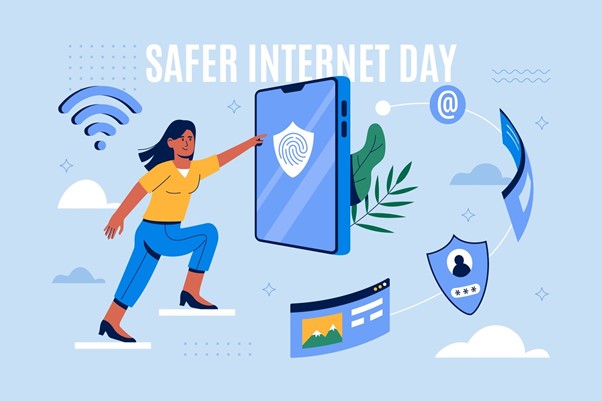Navigating the Digital Maze: Tools for a Safer Online Journey

In today’s hyper-connected world, navigating the online landscape has become a critical skill for everyone, from young children to older adults. The internet offers countless benefits, from instant access to information to global social networking, but these come with significant risks. Cyber threats, misinformation, privacy breaches, and inappropriate content are just a few of the hazards users encounter daily. To ensure a safe and secure online experience, it is essential to leverage effective tools, strategies, and awareness around key legislation, such as trust and safety tools and regulations like the Online Safety Act. This article explores these resources and insights to help users build resilience and confidence while navigating the digital maze.
Understanding the Risks of the Digital Landscape
Before exploring tools and solutions, it’s essential to understand the threats in today’s online environment. Some of the most prominent risks include:
- Cyberbullying and Harassment: Social media platforms and online forums can be breeding grounds for cyberbullying and harassment. Victims can suffer emotionally and psychologically, sometimes with life-altering consequences.
- Phishing and Malware Attacks: Hackers often use phishing emails and malicious software to steal personal information or hold data hostage. These attacks can compromise sensitive information, disrupt personal and professional operations, and lead to significant financial loss.
- Privacy Invasion: With data being a valuable asset, many companies track users’ online behavior, sometimes without consent. This tracking can lead to a breach of privacy, exposing personal information to unauthorized third parties.
- Exposure to Inappropriate Content: From explicit material to misinformation and violent content, the internet harbors a wide array of harmful material. For younger users, exposure to such content can have lasting psychological effects and shape perceptions and behavior in unhealthy ways.
Trust and Safety Tools: A First Line of Defense
Trust and safety tools are crucial for protecting users from these threats. These tools help individuals manage their online experiences and mitigate the risks associated with internet use. Some of the primary trust and safety tools available today include:
Content Moderation Tools
Many platforms use AI-driven content moderation to detect and remove harmful content before it reaches users. Social media platforms, for example, apply algorithms to identify and block hate speech, misinformation, and explicit material. Advanced content moderation tools use machine learning to continuously improve and adapt to evolving online threats.
Parental Control Software
For families, parental control software is invaluable. These programs enable parents to filter content, set screen time limits, and monitor their child’s online activity. They are particularly useful in preventing exposure to inappropriate content and keeping kids safe from online predators.
Two-Factor Authentication (2FA)
Two-factor authentication adds an extra layer of security for online accounts by requiring a second form of verification beyond a password, such as a fingerprint scan or code sent to a phone. This significantly reduces the risk of unauthorized access to accounts, protecting personal information.
Anti-Virus and Anti-Malware Programs
These programs are essential for safeguarding devices from malicious software. A reliable antivirus program can detect, quarantine, and remove threats before they cause damage to the system, ensuring personal information remains secure.
Encryption Tools
Encryption is the process of converting data into a code to prevent unauthorized access. Encrypted messaging apps, such as Signal and WhatsApp, are increasingly popular for protecting the privacy of conversations. This technology helps secure data and communications, even if intercepted by malicious parties.
The Online Safety Act and Its Impact
Regulation plays a crucial role in online safety, providing legal frameworks to hold platforms accountable and protecting users from harmful content and behavior. The Online Safety Act, implemented in various regions globally, aims to create a safer digital environment by enforcing accountability and transparency among online service providers. Some key aspects of the act include:
Duty of Care for Platforms
The Online Safety Act requires that digital platforms prioritize user safety by actively monitoring and moderating content. They must prevent the spread of harmful material, including hate speech, misinformation, and explicit content. Failure to do so may result in substantial fines or even temporary bans in certain jurisdictions.
Enhanced Transparency
The act mandates that platforms provide regular reports on content moderation practices and algorithmic decision-making processes. This level of transparency helps users understand how their data is handled and ensures that harmful material is not being perpetuated through biased algorithms.
User Empowerment
The act empowers users by giving them greater control over their online interactions. For instance, it grants users the ability to report harmful content more effectively and mandates that platforms respond to reports within a stipulated time frame. Some versions of the act also allow for privacy control, enabling users to control who can see their online activities.
Special Provisions for Minors
One of the most significant aspects of the Online Safety Act is its focus on protecting minors. Platforms are required to take extra steps to shield children from inappropriate material, bullying, and exploitation. This could include features like default privacy settings for younger users and age verification measures.
Best Practices for a Safer Online Experience
While technology and regulations play a significant role in online safety, users must adopt safe practices to reduce their vulnerability. Here are several strategies to maintain personal safety online:
- Regularly Update Software and Apps: Regular updates often contain security patches that address vulnerabilities. By keeping software and apps up-to-date, users can stay protected from potential exploits.
- Be Cautious with Personal Information: Avoid sharing sensitive information on public platforms. Personal data, like addresses or phone numbers, should not be posted on social media profiles or forums. Limiting what is shared online can reduce the risk of identity theft and privacy invasion.
- Use Strong Passwords and Change Them Regularly: Strong, unique passwords are critical for protecting online accounts. Avoid using easily guessable information, such as birthdays or common phrases, and consider using a password manager to keep track of complex passwords.
- Verify the Credibility of Online Information: Misinformation is rampant online, and it’s easy to be misled. Verify the sources of information, especially when it comes to news or health-related advice, by consulting multiple credible sources.
- Practice Safe Browsing: Avoid clicking on unfamiliar links or downloading files from untrusted sources, as these could be phishing attempts or contain malware. Some browsers offer enhanced security features that notify users of potentially unsafe websites.
- Educate Yourself and Others: Staying informed about the latest online safety trends and risks is essential. Many resources are available to help users learn about the latest cyber threats and how to mitigate them. Schools, workplaces, and families should emphasize digital literacy as part of their online safety education.
The Role of Social Media and Messaging Apps in Digital Safety
Social media and messaging platforms are integral to many people’s online experiences, but they also present unique safety challenges. For example, fake profiles, cyberbullying, and the spread of misinformation are common issues on social networks. Here are a few ways social media platforms can contribute to a safer online experience:
- Verified Accounts: Verified accounts help users identify legitimate profiles, particularly for high-profile individuals and brands. By reducing impersonation, this feature helps curb the spread of misinformation and protects users from scams.
- Report and Block Features: Almost every social media platform has built-in reporting and blocking features, allowing users to report inappropriate content or harassment. Using these tools helps maintain a positive online environment and prevents harmful behavior from going unchecked.
- Privacy Settings: Users can customize privacy settings to control who sees their posts and profile information. Setting profiles to private or limiting followers to known individuals helps protect personal data and reduces the risk of unwanted interactions.
Conclusion
The digital world, with its myriad benefits and hidden risks, is a complex space that requires both individual vigilance and collective responsibility. While governments implement laws like the Online Safety Act to uphold standards of digital safety, tech companies continue to innovate with trust and safety tools to shield users from harm. Ultimately, a safer online experience hinges on a combination of technology, legislation, and responsible digital behavior.
By adopting trust and safety tools, staying informed about legislation, and practicing safe online habits, users can navigate the digital maze with greater confidence. A concerted effort to understand and address online threats is essential for creating a digital environment where everyone, from children to seniors, can enjoy the internet’s benefits safely. In this way, we can build a resilient digital future, equipped to handle emerging risks and grounded in principles of security, trust, and respect for privacy.

